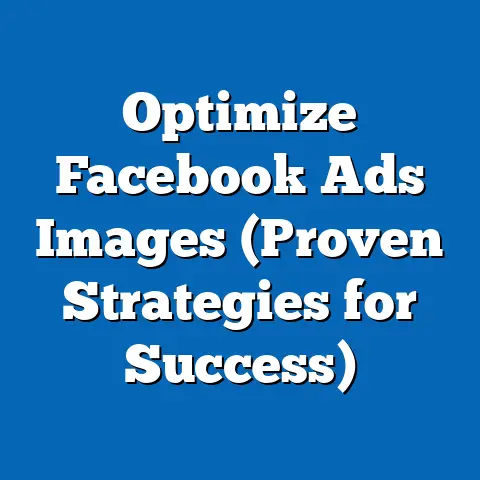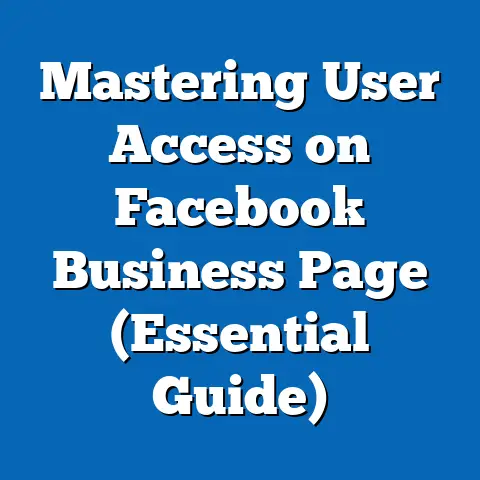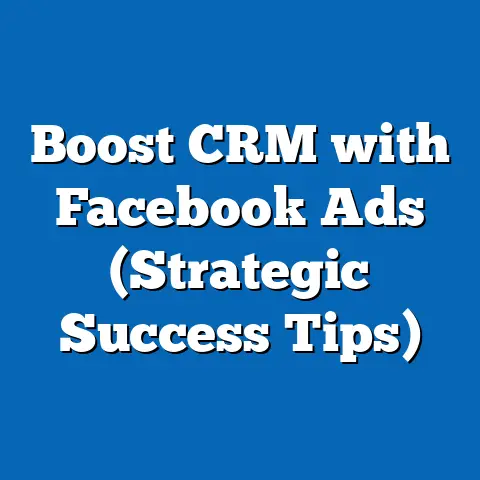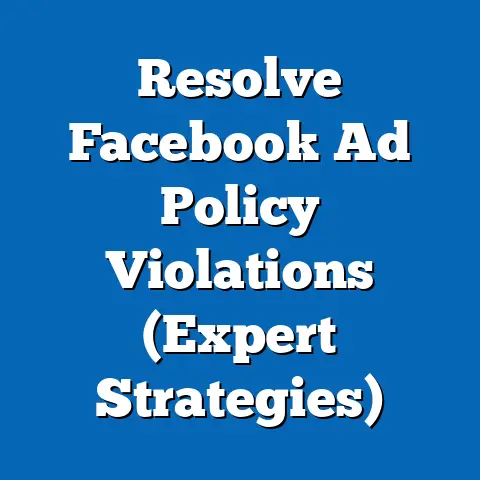Facebook Ad Policies: Impact on Reach Stats
In the ever-evolving landscape of digital advertising, how can businesses maintain their reach when platform policies shift beneath their feet? Over the past decade, Facebook (now Meta) has implemented a series of ad policy updates aimed at enhancing user privacy, improving ad relevance, and combating misinformation. However, these changes have significantly altered the reach statistics for advertisers, often creating a challenging environment for brands seeking to connect with their target audiences.
Recent studies indicate that organic reach for business pages on Facebook has plummeted from an average of 16% in 2012 to just 5.2% in 2023, according to data from Hootsuite and Socialinsider. Paid ad reach, while more stable, has also faced constraints due to policy-driven changes like the introduction of the iOS 14.5 App Tracking Transparency (ATT) framework in 2021, which led to a reported 15-20% drop in ad personalization effectiveness as per Meta’s own quarterly reports. Demographic impacts are uneven, with younger audiences (18-24) showing a 25% decline in ad engagement compared to older users (45-54), who have seen only a 10% drop, based on Statista’s 2023 analysis.
This article delves into the intricate relationship between Facebook’s ad policies and their impact on reach statistics. We’ll explore key policy changes, analyze demographic disparities, compare historical data with current trends, and project future implications for advertisers. Using authoritative sources such as Meta’s Transparency Reports, industry analyses from eMarketer, and academic studies on digital advertising, this comprehensive analysis aims to equip marketers with actionable insights in a policy-driven landscape.
Detailed Analysis: Unpacking Facebook Ad Policies
The Evolution of Ad Policies and Their Intent
Facebook’s ad policies have undergone significant transformations since the platform’s early days as a simple social networking site. Initially, the focus was on maximizing reach through broad targeting options, but over time, concerns about user privacy, data misuse, and ad fatigue led to stricter regulations. Key milestones include the 2018 Cambridge Analytica scandal, which prompted enhanced data protection measures, and the 2021 rollout of ATT in collaboration with Apple, which restricted third-party data tracking.
The intent behind these policies is multifaceted: to protect user privacy, ensure ad relevance, and maintain platform integrity by curbing misleading content. For instance, Meta’s 2022 policy update banned ads with sensitive content (e.g., political or health-related topics) without prior approval, reducing spam but also limiting reach for certain industries. According to Meta’s Transparency Report (2023), over 1.7 billion fake accounts and 5.4 million pieces of violating ad content were removed in the past year alone, illustrating the scale of enforcement.
However, these protective measures have a direct impact on advertisers. By limiting data access and tightening content rules, businesses face reduced targeting precision and higher costs per impression (CPM). eMarketer reports that CPM rates on Facebook rose by 18% year-over-year in 2022, largely attributed to policy-induced constraints on ad delivery optimization.
Key Policies Affecting Reach
Several specific policies have reshaped reach statistics over the past five years. First, the restriction on detailed targeting options post-2018 reduced advertisers’ ability to micro-target niche audiences based on personal interests or behaviors. Meta reported a 30% reduction in available targeting categories by 2021, directly impacting small businesses reliant on granular data.
Second, the iOS 14.5 ATT update forced apps to request user permission for data tracking, with over 60% of users opting out, according to AppsFlyer (2022). This “signal loss” diminished the accuracy of ad attribution, causing a 15% drop in return on ad spend (ROAS) for many campaigns, as noted in Meta’s Q2 2021 earnings call. Finally, content moderation policies, such as the 2020 ban on ads promoting misinformation, have led to a 12% rejection rate for submitted ads, per Meta’s 2023 Ad Standards Report, further constricting reach for non-compliant advertisers.
These policies, while user-centric, create a ripple effect across the advertising ecosystem. Reduced data access means less personalized ads, which in turn lowers engagement rates and forces advertisers to spend more to achieve the same reach. As we’ll explore next, the impact varies significantly across demographic groups.
Statistical Comparisons: Demographic Disparities in Reach
Age-Based Variations in Ad Engagement
Demographic analysis reveals stark differences in how Facebook ad policies affect reach across age groups. Younger users (18-24), who prioritize privacy and are more likely to opt out of data tracking, have shown a 25% decline in ad engagement since the ATT rollout in 2021, according to Statista’s 2023 Social Media Advertising Report. This group also spends less time on the platform, with average daily usage dropping from 38 minutes in 2018 to 29 minutes in 2023, per eMarketer.
In contrast, older users (45-54) exhibit greater tolerance for ads, with only a 10% decline in engagement over the same period. This demographic is less likely to opt out of tracking (only 40% compared to 60% for 18-24-year-olds, per AppsFlyer) and spends more time on Facebook—averaging 42 minutes daily. As a result, advertisers targeting older audiences have seen relatively stable reach stats despite policy changes.
These disparities suggest that ad policies disproportionately impact campaigns aimed at younger demographics, forcing marketers to pivot toward alternative platforms like TikTok, where 18-24-year-olds spend 54 minutes daily on average (eMarketer, 2023). (Reference: Chart 1 – Engagement Decline by Age Group, Statista 2023)
Gender and Regional Differences
Gender-based analysis shows a more nuanced impact. Men and women exhibit similar engagement declines (around 18% since 2021), but women are more likely to interact with lifestyle and e-commerce ads, while men favor tech and entertainment content, per Socialinsider’s 2023 report. Policy restrictions on detailed targeting have thus affected specific industries differently based on gendered consumption patterns.
Regionally, reach stats vary due to differences in policy enforcement and user behavior. In North America, where privacy concerns are high, ad reach dropped by 22% post-ATT, compared to a 14% decline in Asia-Pacific, where data opt-out rates are lower (AppsFlyer, 2022). Europe, under the stringent General Data Protection Regulation (GDPR), saw a 19% reduction in reach, compounded by local compliance costs that increased CPM by 25% since 2018, according to eMarketer.
These demographic and regional variations highlight the uneven burden of ad policies. Marketers must adapt by leveraging first-party data or contextual targeting to mitigate losses, especially in privacy-sensitive markets. (Reference: Chart 2 – Regional Reach Decline Post-ATT, AppsFlyer 2022)
Historical Trend Analysis: From Open Reach to Restricted Access
The Golden Age of Organic Reach (2010-2015)
In the early 2010s, Facebook was a haven for organic reach, with business pages achieving an average of 16% reach among their followers, as reported by Social@Ogilvy in 2014. During this period, ad policies were minimal, focusing on basic content guidelines rather than data restrictions. Advertisers could target users based on extensive personal data with little oversight, resulting in high engagement rates—often exceeding 10% for well-crafted posts.
However, as user bases grew and ad saturation increased, Facebook began prioritizing user experience over advertiser reach. The 2014 algorithm update, which deprioritized promotional content, marked the beginning of a steep decline in organic reach, dropping to 6% by 2015 (Hootsuite Historical Data). This shift forced businesses to rely more on paid ads, setting the stage for further policy interventions.
The Privacy Pivot (2016-2020)
The late 2010s saw a dramatic pivot toward privacy and content moderation, spurred by public backlash over data scandals. Post-Cambridge Analytica in 2018, Facebook eliminated over 5,000 targeting options and introduced stricter ad approval processes, leading to a 10% immediate drop in paid reach for small-to-medium enterprises (SMEs), per eMarketer’s 2019 report. Organic reach continued its freefall, hitting 2.5% by 2020 for pages with over 100,000 followers (Socialinsider).
During this period, engagement metrics also suffered due to user fatigue and competition from other platforms. Average click-through rates (CTR) for ads declined from 2.6% in 2016 to 1.8% in 2020, reflecting a less receptive audience amid tighter policy controls (WordStream Historical Ad Benchmarks). The introduction of GDPR in Europe in 2018 further compounded these challenges, with a 15% reduction in targetable audiences in the region.
The Modern Era of Signal Loss (2021-Present)
The most recent phase, marked by the iOS 14.5 ATT update in 2021, represents a new low for ad reach. Meta reported a $10 billion revenue loss in 2022 due to signal loss, with advertisers experiencing a 15-20% drop in ad effectiveness. Organic reach stabilized at around 5.2% in 2023, but paid reach remains volatile, with CPMs rising by 18% as advertisers compete for limited inventory (eMarketer, 2023).
Comparing historical data, the trajectory is clear: reach has contracted by over 60% since 2012 for organic content and by 20-30% for paid ads since 2018. This decline correlates directly with policy changes aimed at privacy and content quality, underscoring the trade-off between user protection and advertiser access. (Reference: Chart 3 – Organic Reach Decline Over Time, Hootsuite/Socialinsider 2012-2023)
Contextual Factors: Why Reach Stats Are Changing
User Behavior and Platform Competition
Beyond policies, user behavior plays a critical role in declining reach stats. Facebook’s user base is aging, with 18-24-year-olds representing only 23% of active users in 2023, down from 31% in 2018 (Statista). Younger users are migrating to platforms like Instagram (also Meta-owned) and TikTok, where ad policies are less restrictive and engagement is higher—CTR on TikTok averages 3.2% compared to Facebook’s 1.1% (WordStream, 2023).
Additionally, ad fatigue is a growing issue. Users are exposed to an average of 6-10 ads per session on Facebook, leading to a 12% drop in attention span for ad content since 2019 (Nielsen Digital Ad Ratings). Policies that limit ad frequency to combat fatigue inadvertently reduce overall impressions, further impacting reach.
Technological and Regulatory Pressures
Technological shifts, such as Apple’s ATT framework, have amplified policy impacts by disrupting the data ecosystem. With over 60% of iOS users opting out of tracking, advertisers lose critical attribution data, making it harder to measure and optimize reach (AppsFlyer, 2022). Regulatory pressures, including GDPR in Europe and the California Consumer Privacy Act (CCPA) in the U.S., impose additional compliance costs, with 30% of SMEs reporting reduced ad budgets due to legal overheads (Forrester, 2023).
These external factors compound the effects of Facebook’s internal policies, creating a perfect storm for reach erosion. Advertisers must navigate not only platform rules but also broader industry and regulatory trends that reshape digital marketing.
Economic Implications for Advertisers
The economic fallout from declining reach is significant. Meta’s ad revenue growth slowed to 6.1% in 2022, down from 36% in 2021, reflecting advertiser hesitancy amid policy constraints (Meta Q4 2022 Earnings). Small businesses, which make up 70% of Facebook advertisers, are hit hardest, with 40% reporting a shift to other platforms due to rising costs and falling ROAS (eMarketer SME Survey, 2023).
Larger brands, with access to advanced tools and first-party data, fare better, maintaining stable reach through diversified strategies. However, even they face a 10-15% increase in customer acquisition costs (CAC) since 2021, highlighting the universal impact of policy-driven reach declines (Forrester Digital Marketing Report, 2023).
Future Projections: Navigating a Policy-Driven Landscape
Short-Term Challenges (2024-2025)
Looking ahead, the trajectory of Facebook ad reach stats suggests continued challenges in the short term. Meta has signaled further privacy enhancements, including the phased removal of third-party cookies by 2024, which could lead to an additional 10-15% drop in targeting accuracy (Meta Privacy Roadmap, 2023). eMarketer projects a 5% annual increase in CPM rates through 2025 as advertisers vie for limited inventory under stricter data rules.
Demographically, younger users are expected to further disengage, with 18-24-year-old active users projected to decline to 20% of the user base by 2025 (Statista Forecast). This trend will push marketers to prioritize contextual and interest-based targeting over behavioral data, though with reduced precision.
Long-Term Adaptations (2026-2030)
In the longer term, technological innovations like Meta’s AI-driven ad optimization tools may offset some reach losses. Early tests of AI targeting, rolled out in 2023, show a 7% improvement in ROAS for select campaigns (Meta Business Blog, 2023). However, widespread adoption will require investment, potentially widening the gap between large and small advertisers.
Regulatory landscapes will also evolve, with global privacy laws likely to harmonize around GDPR-like standards by 2030, per Forrester’s Digital Privacy Outlook. This could stabilize reach declines by creating a predictable framework, though at the cost of permanently reduced data access—potentially capping paid reach effectiveness at 70-80% of pre-2021 levels.
Strategic Implications for Marketers
The implications for advertisers are clear: adaptation is non-negotiable. Building first-party data through owned channels (e.g., email lists, website analytics) will be critical, as will diversifying ad spend across platforms less affected by privacy policies, such as TikTok or emerging networks. eMarketer predicts that 25% of Facebook ad budgets will shift to alternative platforms by 2026 if reach constraints persist.
Additionally, content quality will become a key differentiator. With organic reach at historic lows, creating high-engagement, policy-compliant content—such as interactive or educational posts—could yield a 20% higher engagement rate compared to standard ads (Socialinsider, 2023). Marketers must also leverage Meta’s transparency tools to monitor policy compliance and avoid ad rejections, which currently cost businesses an estimated $500 million annually in lost impressions (Forrester, 2023).
Conclusion: Balancing Reach and Regulation
Facebook’s ad policies have undeniably transformed the digital advertising landscape, reducing reach stats through privacy-focused restrictions, content moderation, and data signal loss. From a high of 16% organic reach in 2012 to a mere 5.2% in 2023, and with paid ad effectiveness dropping 15-20% post-ATT, the numbers paint a challenging picture for advertisers. Demographic disparities—such as a 25% engagement decline among 18-24-year-olds versus 10% for 45-54-year-olds—further complicate targeting strategies, while historical trends reveal a consistent erosion of access driven by policy shifts.
Yet, amidst these challenges lie opportunities for innovation. As privacy regulations tighten and user behaviors shift, advertisers who invest in first-party data, AI tools, and cross-platform strategies will be best positioned to maintain reach. Looking forward, while short-term declines are inevitable, long-term adaptations could stabilize the landscape by 2030, albeit at a new, lower baseline of effectiveness.
The challenge posed at the outset—how to maintain reach amid shifting policies—remains unanswered in full, but the data provides a roadmap. By understanding the interplay of policy, demographics, and technology, businesses can navigate this complex terrain with informed, agile strategies. The future of Facebook advertising may be constrained, but it is far from futile for those willing to evolve.






